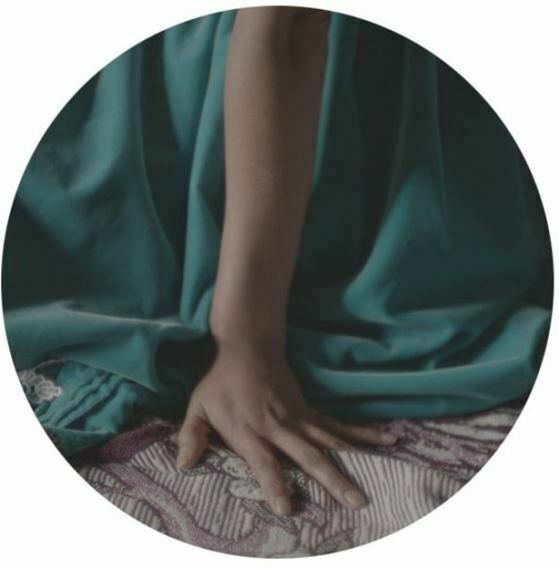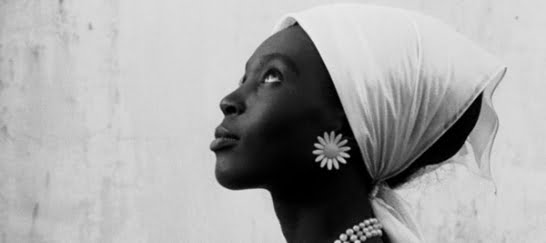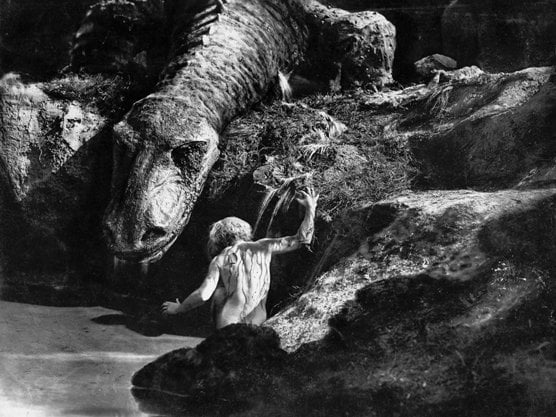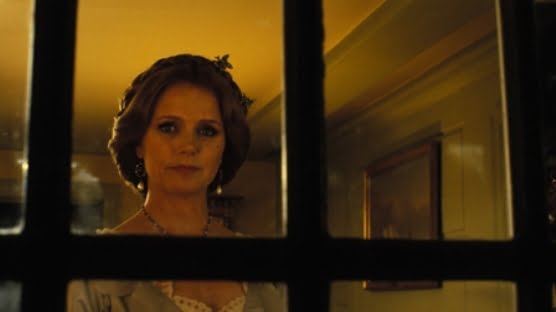
After television and books, here’s my review of the year in film.
As someone who only saw two new films in a cinema this year, it still feels a bit of a cheat to be talking about enjoying film in any other way, but aside from attending a film festival (just the one in 2015) all of my film-watching has been on disc or via my ever-so smart TV. Cinema is primarily delivered to me via Mubi, Blinkbox and Netflix, and as a result I am seeing more films than I have been able to do in years, of a greater diversity, and in a great deal more comfort. As with television, online delivery systems are blurring the sense of dates. I’m vaguely aware of some films being new and others therefore old, but the compulsion to keep up with the latest is something that I’ve long since lost. All films are new until you’ve seen them.
My new film of the year was made in 2014 but seems only to have started the run of festivals in 2015. Lucifer, directed by Gust van den Berghe, is concerned with the visitation of the Devil to a present-day Mexican village, being based on a classic 17th century Dutch play of the same title by Joost van den Vondel. What is exceptional about the film is that it is shown with a circular frame, with several sequences shot using conical mirror to capture action in 360-degrees (a technique named Tondoscope by the director). This is no gimmick. It is entirely in keeping with the view’s insight into a world wholly informed by religion with an all-encompassing idea of God’s design. The circular shape forced the filmmakers to rethink composition and cutting, which in turn make the viewer rethink how film is designed to work. I wrote enthusiastically about the film on this blog and would urge anyone with an open mind about what cinema is to see it if they can.
Among the news and newish films that I liked were: Jean Luc-Godard’s Adieu au Langage, which is an ingeniously-constructed puzzle in which the action is played out twice with a different pair of actors, whose impact was dampened a little once you realised what was going on; Macbeth, with Michael Fassbender and Marion Cotillard, which was a good attempt to present the play in realistic Scottish setting (you felt the cold) in which fear and superstition were fundamental to how such lives were understood; The Martian, which would have been a great deal better had it stuck to its Robinson Crusoe-like central premise (which is apparently what Ridley Scott thought he had signed up to initially) and not interwoven this with a formulaic story of teamwork and rescue; Boyhood, which didn’t quite move me as much as I expected it to but which will serve as interesting evidence in the future of the importance of Harry Potter to a worldwide generation; and Birdman, which was just shallow trickery, wholly unworthy of the awards it gained.

The best film of my year, in that it rocketed straight into my top ten favourite feature films ever (probably) was Ousmane Sembene’s La noire de… aka Black Girl (1966). This was the first feature made by the Senegalese author and filmmaker, and there can have been few more accomplished film debuts than this. It tells the story of a Senegalese girl employed by a French middle class couple as a maid and nanny, whose sense of entrapment reduces her into silence and despair. Its theme is the emergence of an African way of seeing things in the cinema, and with the simplest of touches it unpicks much of what you may have thought about cinema to that point (and by extension Africa) and makes you look and think anew. I found it exhilarating, and it is great news that the BFI has released the film in a DVD/Blu-Day dual-format release.
I serve as a judge of the Focal International awards, for the film restoration category, judging the best restorations for a single title and a group of titles (for which the criteria involved may be different in some respects, given the scale of the work undertaken). This year the single title was a tough choice – how do you choose between My Darling Clementine, The Colour of Pomegranates, German Concentration Camps Factual Survey, In the Land of the Headhunters, M, Stage Sisters, and Umberto D (among others)? You are not judging which is the best film, of course, but which is the best restoration of a film deemed worthy of restoration, but the technical standards have become so high that winners are selected by only the finest of margins. Our choice was Das Cabinet des Dr. Caligari (1919), restored by Friedrich-Wilhelm-Murnau-Stiftung, which looked exceptional in every degree, the model of how a film restoration should be: not just technically adroit but which is so presented as to restore the film in a cultural sense, reviving its presence. The group restoration award went to Camera Obscura: The Walerian Borowczyk Collection, a boxed DVD set released by Arrow films. Borowczyk has never been my of cup of tea, to be frank, but the restorations were revelatory, the work involved Herculean (given the obscure and scattered state of some of the elements) and as an animator (which is how he started out) Borowczyk was a filmmaker of genius. The films Renaissance (1963) (in which destroyed objects reassemble themselves) and the hallucinatory Jeux des anges (1964) are triumphs of an unfettered imagination.

Among silent films I saw, the great discovery for me was Fritz Lang’s Die Nibelungen (1924). I’d stayed clear of this two-part telling of the epic German poem, fearing something ponderous and ridiculous. How wrong I was. I didn’t find the films slow at all – five hours flew by, albeit over a few evenings. They are the optimum realisation of a mythic fantasy, much like Peter Jackson’s Lord of the Rings trilogy. The sets are stupendous, of course, but the films are above all credible – they show why the stories were originally created, and why they have lasted. And I’d much rather watch Lang than ever have to sit through Wagner.
The marvellous discovery of Sherlock Holmes (1916), the feature film version of the play with William Gillette that did so much to embellish the visual idea of Holmes, was a heartening story, but the film to be honest is lacking in Holmesian imagination. The first filmmakers did not understand what lay at the heart of the popularity of Conan Doyle’s creation, or lacked the skill necessary to translate that idea of a mind outwitting the seemingly insurmountable. Not until the early 1920s, and the series of films made by Maurice Elvey and starring Eille Norwood, would we see a Holmes who triumphed through thought, not action.
Other silents included the The Dumb Girl of Portici (1916), an early example of the dictum that in Hollywood no one knows anything. In retrospect, someone might have though that an adaptation of an opera about the uprising against Spanish rule in Naples in the mid-17th century could possibly have lacked general appeal, but no – on they went, making an incomprehensible and deliriously violent epic when left you feeling battered by the end of it. It was a flop of course, and the only reason anyone watches it today is because it stars Anna Pavlova. The scene of her drifting past a row of poles bearing severed heads does at least linger in the mind. So much better was La Princesse aux Clowns (1924), which I saw in open air at the Bologna film festival – a minor work without any great artistic significance, but beautifully staged and wittily constructed, the kind of film to show to anyone and leave them happier by the end of it.
And then there were classic films that I finally got round to seeing only to be disappointed. It’s a bit embarrassing to admit that I’d not seen Gilda (1946) before now, but alas I found it flat and uninvolving – a film better as a set of stills than as a film. I sat down expecting to find Robert Bresson’s Mouchette (1967) something before which one would have to genuflect, but instead I found it ridiculous, its punchbag heroine so implausible as to negate any sympathy. Some revere this film as expressing the epitome of human suffering. What I saw was intention and effect completely divorced from one another. Other classics of yesteryear have simply lost their freshness because of what followed after. Andrzej Wajda’s Kanal (1957), about the Warsaw uprising, has lost the credibility and tension that clearly it once had. Ars longa, vita brevis they say – but too often life may outrun an artwork.

How gratifying then to view an old favourite after thirty years and find that it hasn’t faded at all. The Europeans (1979), with Lee Remick and Lisa Eichhorn, seemed like the epitome of Jamesian filming at the time, and it still is. Every shot, every gesture, every carefully-turned phrase is precise in its use and an integral piece of the puzzle. It was my happy re-discovery of the year.
So many other films that could be mentioned, of course, only I have forgotten them, which tells its own story. But what is a film? Seeing the flowering of the plot and characters than inhabit Fargo, be it the feature film of that name, the first television series that followed after it chronologically, or the second series whose action predated both, reveals a work of the imagination that transcends boundaries. In making the overall vision clear, Fargo season 2 could just as much be my film of the year as it was my television programme of the year.